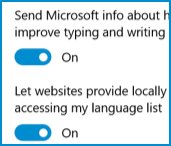 Ever since ET coined the phrase in the 1980s, programs which attempt to contact their creator's server in order to send back information about the user are said to be "phoning home". Such behaviour is not uncommon. Adobe Digital Editions, for example, which is a free program for reading protected e-books, was recently discovered to send Adobe details of every book you read, and every page you turned.
Ever since ET coined the phrase in the 1980s, programs which attempt to contact their creator's server in order to send back information about the user are said to be "phoning home". Such behaviour is not uncommon. Adobe Digital Editions, for example, which is a free program for reading protected e-books, was recently discovered to send Adobe details of every book you read, and every page you turned.
Windows 10 continues the tradition of software phoning home, and arguably takes it to new levels. Much of what you do within Windows finds its way back to Microsoft. Whether this is so that the company can make its products better, or display advertising that's more relevant to you, is an argument best left for another day.
Thankfully, there are ways to turn off the data leakage in Windows 10. Unfortunately, it can take some time to do so, because there are so many settings to change. But in order to find those settings I can do no better than point you at an online article which shows you a full 30 of them. So if you're using Windows 10 and you want to retain as much privacy as possible, head without delay to http://www.howtogeek.com/224616/30-ways-windows-10-phones-home/ and start tweaking your system.
 We are looking for people with skills or interest in the following areas:
We are looking for people with skills or interest in the following areas:

Comments
I had already taken care of most of these during setup, and i don't run a Microsoft account.
As to the update situation - i have the free Home edition, but i plan to buy the upgrade to Business (or whatever it's called), which gives you more control.
Incidentally - for those who change the update setting to "Notify me to schedule" - if it does, and you don't schedule one, you will discover the hard way that is has still scheduled an automatic restart - just some time in the future when it thinks you don't use the computer much.
Also, i think your ability to schedule a later time is limited to about two days in the future.